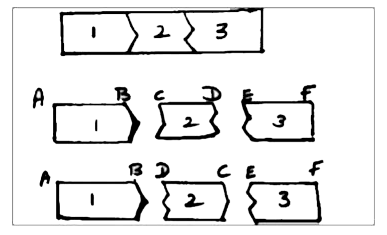If a magnet is broken into 3 pieces, how many poles would be there in all?
To solve the question of how many poles would be there if a magnet is broken into 3 pieces, we can follow these steps:
1. Understanding the Structure of a Magnet:
- A magnet has two poles: a North Pole and a South Pole. These poles are essential for the magnet's properties.
2. Breaking the Magnet:
- When a magnet is broken into pieces, each piece will still contain both a North Pole and a South Pole. This is because the magnetic properties are inherent to the material of the magnet.
3. Analyzing Each Piece:
- If we break the magnet into 3 pieces, each piece will become a smaller magnet. Therefore, each piece will have its own North Pole and South Pole.
4. Counting the Poles:
- Since there are 3 pieces and each piece has 1 North Pole and 1 South Pole, we can calculate the total number of poles:
- Number of North Poles = 3 (one from each piece)
- Number of South Poles = 3 (one from each piece)
5. Total Number of Poles:
- Adding the North and South Poles together gives us:
- Total Poles = Number of North Poles + Number of South Poles = 3 + 3 = 6 poles.
Final Answer:
If a magnet is broken into 3 pieces, there would be a total of 6 poles (3 North Poles and 3 South Poles).
---
- A magnet has two poles: a North Pole and a South Pole. These poles are essential for the magnet's properties.
- When a magnet is broken into pieces, each piece will still contain both a North Pole and a South Pole. This is because the magnetic properties are inherent to the material of the magnet.
- If we break the magnet into 3 pieces, each piece will become a smaller magnet. Therefore, each piece will have its own North Pole and South Pole.
- Since there are 3 pieces and each piece has 1 North Pole and 1 South Pole, we can calculate the total number of poles:
- Number of North Poles = 3 (one from each piece)
- Number of South Poles = 3 (one from each piece)
- Adding the North and South Poles together gives us:
- Total Poles = Number of North Poles + Number of South Poles = 3 + 3 = 6 poles.
If a magnet is broken into 3 pieces, there would be a total of 6 poles (3 North Poles and 3 South Poles).
Topper's Solved these Questions
- BOOK - MTG IIT JEE FOUNDATIONCHAPTER - FUN WITH MAGNETSEXERCISE - Olympaid/HOTS Corner15videos
FUN WITH MAGNETS
- BOOK - MTG IIT JEE FOUNDATIONCHAPTER - FUN WITH MAGNETSEXERCISE - Exercise - Subjective Problems (Long Answer Type)5videos
FUN WITH MAGNETS
- BOOK - MTG IIT JEE FOUNDATIONCHAPTER - ELECTRICITY AND CIRCUITS EXERCISE - OLYMPIAD /HOTS CORNER15videos
ELECTRICITY AND CIRCUITS
- BOOK - MTG IIT JEE FOUNDATIONCHAPTER - LIGHT, SHADOWS AND REFLECTIONSEXERCISE - OLYMPIAD/HOTS CORNER15videos
LIGHT, SHADOWS AND REFLECTIONS
Similar Questions
Knowledge Check
- Question 1 - Select One
If Hydra is broken into pieces
AHydra will dieBEvery fragment will grow into complete HydraCSome fragments will from reproductionDHydra will undergo sexual reproduction - Question 2 - Select One
When a magnet is broken into two parts,
Athe bigger part acts like the north poleBthe smaller part acts like the north pole.Cboth the parts will have both the poles.Dpolarity of each part depends upon the material - Question 3 - Select One
When a magnet is broken into two parts,
Athe bigger parts acts like the north pole.Bthe smaller part acts like the north pole.Cboth the parts will have both the poles.Dpolarity of each part depends upon the material.
What happens if a magnet is broken into two pieces?
View SolutionAssertion (A): Magnetic poles cannot be separated by breaking a bar magnet into two pieces.
Reason (R): When a magnet is broken into two pieces, the magnetic moment will be reduced to half.View SolutionA large magnet is broken into two pieces,so that their length are in the ratio 2:1.The pole strength of the two piece will be in the ratio
View SolutionA large magnet is broken into two pieces. If the lengths of two pieces are in the ratio of 3 : 4 . What is the ratio of their pole strengths ?
View SolutionAs shown in the figure, a magnet is broken into three pieces and the middle piece is reversed. Which of the following statements, according to you, holds true?
 View Solution
View Solution

